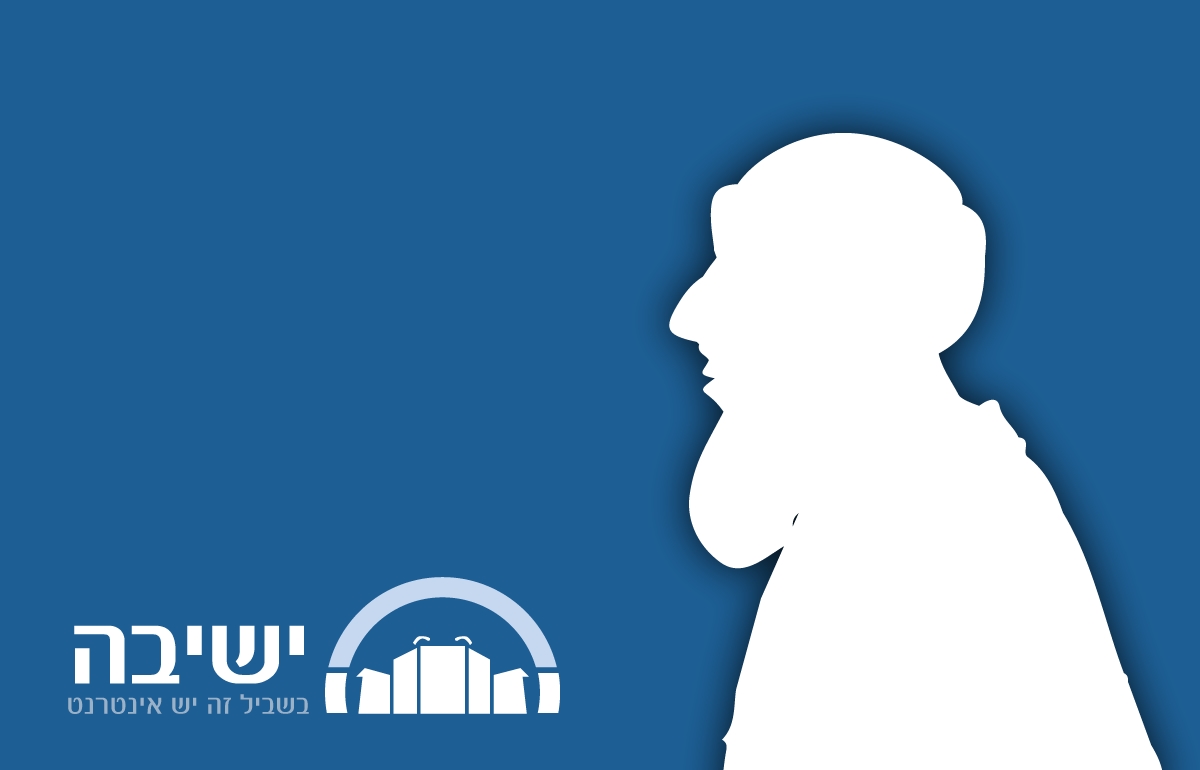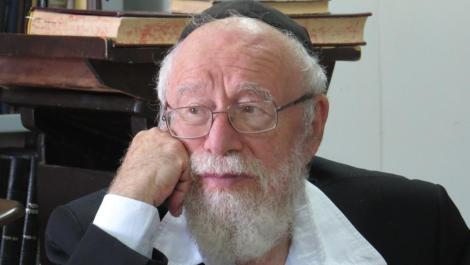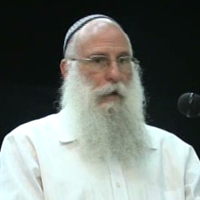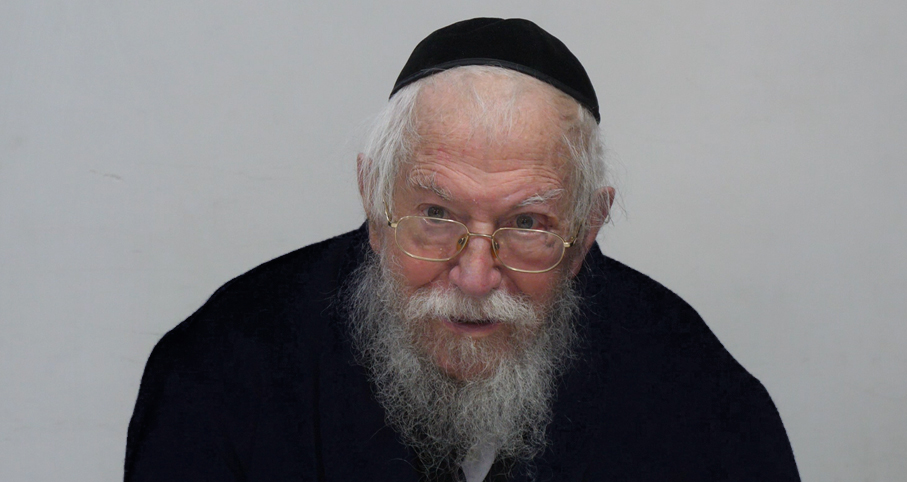Beit Midrash
- Shabbat and Holidays
- Rosh Hashana
- Shofar Blowing
- Shabbat and Holidays
- The High Holidays
- The Month of Elul
The Torah study is dedicatedin the memory of
Yaakov Ben Behora
On Rosh HaShanah, the head and start of the New Year we are commanded to blow the shofar. "On the first day of the seventh month you shall have a holy day, you shall not do any work, it will be a day of blowing [the shofar] for you" (Bemidbar 29:1). The shofar is a ram’s horn and it produces a piercing cry. The voice of the shofar is heart wrenching and recalls the primordial, voiceless cry of someone in pain, a fellow human crying for help.
The shofar is the call of the heart, the inner awakening of repentance and return to God. It is the suffering of every soul that has sinned, that has strayed from God and His commandments. It is supposed to awaken us to mend our ways, to find a place for God in our lives. (See Rambam, Mishneh Torah, Hilchot Teshuvah 3:4 and previous chapter on Elul; "Blowing the Shofar, Together")
We listen carefully to the shofar, one note, another and another, until we have heard one hundred blasts from the shofar during the service on Rosh HaShanah. There are three notes of the shofar: tekiah, one long blast, shevarim, three shorter blasts and the teruah, nine bursts from the shofar. The cry starts complete, but becomes broken and confused until it breaks down into the teruah, like sobs of the pained. From tekiah, to shevarim to teruah. However the pattern always concludes with a tekiah to show us that there is hope. The ways that have become broken can be straightened, the sobbing will end with a complete cry of the tekiah.
The shofar is not only blown but it is also mentioned as part of our prayers. The Amidah prayer of Musaf on Rosh HaShanah is divided into five parts: the first three blessings that are recited every day, the last three blessings, and three additional sections in the middle. These are called Malchuyot, Zichronot and Shofarot, meaning verses of monarchy, remembrance and shofar.
Each section contains ten verses that speak of each of these three concepts in turn. First are verses that discuss God as King, three verses from Torah, three from Tehilim, three from the prophets and then a tenth from Torah. Then ten verses that discuss God remembering our fathers, remembering us and noting good deeds, three from Torah, three from Tehilim, three from prophets and a concluding verse from Torah. Then come ten verses that discuss the shofar, three from Torah, three from Tehilim, three from prophets and a final verse from Torah. Each section concludes with a prayer and a special blessing.
The Shofar in Our Prayers
The ten verses that deal with the shofar mention different contexts where the shofar was blown and also different eras of the shofar. The verses from the Torah discuss the shofar as it was heard during the giving of the Torah. "The voice of the shofar increased in volume, Moshe spoke and God answered in a voice" (Shemot 19:19).
The verses from Tehilim speak of the shofar as an instrument used to praise God in the Temple. "Praise Him with the blast of the shofar" (Tehilim 150:3). The verses quoted from the prophets discuss how the shofar will be blown when God reveals Himself during the time of the ultimate redemption. "God will appear to them, His arrow will go forth like lightning, and God will blow the shofar" (Zechariah 9:14).
One of the verses from the prophets is quite well known but needs some explanation. An analysis of this verse will reveal an important connection between the shofar and the process of redemption.
The verse is from the prophet Yeshayahu "On that day a big shofar will be blown and those that were lost in Ashur, and those that were pushed off in Egypt will come, and they will bow to God on the holy mountain in Jerusalem" (Yeshayahu 27:13).
There are several questions that should be asked with regards to this verse. Why were those in Ashur, in Assyria, lost while those in Egypt were pushed off? Why does the prophet refer to the shofar as being big? Is there another shofar that is not big, a small shofar? What is it about the big shofar that it has the power to bring all of the people in Ashur and in Egypt back to Jerusalem?
Let us try to answer these questions.
The Exile of Ashur and the Exile of Egypt
The prophet describes the exiled Jews in Assyria as being lost, but those that were exiled to Egypt as being pushed off. The Jews in Ashur refers to the Babylonian exile after the destruction of the Second Temple. The Jews in Egypt were those who emigrated from Israel due to the famine in the time of Ya’akov and who were enslaved for 210 years in Egypt.
There was a significant difference between these two exiles. In Egypt the Jews, or at least a significant number of them, wanted to leave. They were waiting to get out of Egypt, and when the time came were happy to go. It is true that there were numerous problems in the desert afterwards, but, in general, Bnei Yisrael were willing and eager to leave Egypt and end the exile.
On the other hand, when the time came to leave Ashur the Jews were not so ready to go back to Israel. Koresh, the Persian king Cyrus, made a proclamation that the Jews could return, but still they remained in Babylon. "Thus said Koresh the king of Peras2 ‘The God of heaven has given me sovereignty over all the lands of the world, and He has commanded me to build Him a house in Jerusalem in Yehudah. Who amongst you, of His people will his God be with him and will ascend to Jerusalem in Yehudah and build the house of God, the God of Israel, He is the Lord in Jerusalem’" (Ezra 1:2-3).
Ezra took up the challenge and went to Jerusalem with the intention of building the Temple and encouraging all the Jews to follow him. He wrote letters to many communities of his day, but they gave excuses and reasons why they preferred to stay put in the exile. The majority of the Jews did not join him and the attempt to create a thriving commonwealth in Israel was ultimately unsuccessful.
The friction between those Jews who did make the journey to Israel and those who did not is obvious in the following passage in the Gemara.
"Reish Lakish was swimming in the Yarden, the Jordan River. Raba Bar Bar Chana came and offered his hand.
‘God hates you,’ he [Reish Lakish] said. ‘As it says ‘If it is a wall we will build on it a tower of silver, if a door then we will enclose her with boards of cedar wood’ (Shir HaShirim 8:9). If you would have made yourselves like a wall and would all have come to live in Israel in the time of Ezra you would have been like silver that does not rot. Now, that you came up like doors you are likened to cedar that rots’" (Yoma 9b).
Reish Lakish, the Israeli sage is unwilling even to shake hands with his Babylonian counterpart. He attacks him saying that "God hates you". Rashi explains that this refers to all of the Babylonian Jews who did not go to live in Israel and thus prevented the Divine Presence from residing in the Second Temple. Instead of coming like a wall, in strength, they came to Israel like a door. Rashi explains that a door is opened by one person and closed by his friend. This implies that the Jews came one by one and not in great numbers.
The prophet Yeshayahu therefore describes the Jews in Egypt as "pushed off". It was as though they were waiting to leave but were prevented from doing so. However, the Jews in Ashur are described as being "lost", because they were allowed to return to their land, but chose not to do so. Both of these groups will return to Israel and worship God here on hearing the sound of the big shofar.
What is the big shofar?
The Big Shofar
In our prayers during the section of the Musaf that deals with the shofar we say "God, and God of our fathers, blow the big shofar for our redemption"3. We pray for the big shofar, not just for the shofar. We also seem to be equating our shofar with the big shofar. What is it about our shofar that can be described as big, as opposed to small or regular?
Rav Kook notes that there are a number of possibilities when it comes to blowing the shofar. The best shofar is a ram’s horn and this is the shofar that we generally use (Shulchan Aruch, Orach Chayim 586:1). If this is unavailable one can blow any other animal’s horn providing that the animal is kosher (ibid.). The only exception is a cow’s horn that cannot be used for the shofar.
One cannot use the horns of a non-kosher animal or an animal that was used for idolatry. The Mishnah Berurah adds that if one has no other horn they can even blow the horn of a non-kosher animal. However, in such a case they should not make a blessing over the blowing of the shofar as it is not clear whether one fulfils the mitzvah with such a horn (ibid. Mishnah Berurah note 8).
In this set of laws we notice that there are three levels of shofar, the best, that is the ram, the kosher, that is any other animal, and the non-kosher that can be used if nothing else is available. So here we have a ‘big’ shofar, a ‘regular’ shofar and a ‘small’ shofar.
Rav Kook uses these laws and levels of the shofar allegorically to explain three different types of redemption.
Three Types of Redemption
There are people who come to live in Israel because they know that it is a mitzvah. They want to feel close to God. Alternatively, they want to be able to keep all of the mitzvot that are dependent on the Land and cannot be kept in the Diaspora. Like tithing of fruit, leaving the field fallow every seventh year and such like.
This is the best reason to come and be redeemed.
There are others who come to Israel but their motives are not religious. They feel that it is important that the Jews should have a homeland. They feel that it s important to support the Jewish State and be a part of it. They come because they like the weather, the people, the food. The economy is better in Israel than it is in other places.
These are valid reasons to come on aliyah. They are not the most holy of reasons but they are definitely kosher.
There are others who do not want to come to Israel. They are happy and content to live in other places. They may support the State but they do not feel that they need to make the effort to live here. Rav Kook writes that in such a case the non-kosher animals can be used. This is an allusion to anti-Semites who scream and shout at the Jews. They create an environment in which the Jews feel uncomfortable or threatened and leave. These Jews come to Israel because they have no other choice, they were forced to through anti-Semitism and persecution4.
These three types of people are reflected in the three types of shofar. The first shofar, the ram’s horn, is the best choice for the shofar. This is like those who come to Israel for religious reasons.
The next best choice is kosher but not the most approved. This is like those who come to Israel for other reasons. Their reasons may be valid, they are kosher, but they are still not perfect, not clean of ulterior motives. It is better that they come to Israel rather than not make the effort. They are not rejected and their efforts are appreciated. However, they know that there are more valid and valiant reasons for moving and ascending to Israel.
The poorest shofar comes from the non-kosher animal. It can be blown but no blessing is made. This is like those who only come because they were the victims of anti-Semitism and persecution. Their motivation derived from the non-kosher anti-Semites who forced them to make the move. When no other option is available this is also acceptable, but no blessing can be made. It is inappropriate to make a blessing on something that is negative and painful.
Rav Kook is not saying that anti-Semitism is a good thing. Rather that it is inevitable, if the Jews do not want to be redeemed God will not let them go. He will see to it that somehow they will return to Israel, either by free will or against their will5.
A Painless Redemption
We can now understand why the prophet and our prayers speak exclusively of the ‘big’ and grand shofar. We pray that the Jewish people will be awakened by the largest and best of the shofarot. That the redemption will come as a result of the purest of intentions. The prophet is requesting that the final redemption be painless and without any need for anti-Semitism. That the Jews should return by choice and not through force.
We pray every year, and every day, that God should redeem us with the best possible shofar. That the shofar should act to stir us to return. To return to God, to His Torah and to His, and our, holy land. We pray that all Jews shall return. Those who want to and cannot, as well as those who can, but do not want to, yet.
"Our God and God of our fathers, sound a great shofar to redeem us", very soon.
---------------------
Rabbi Gideon Weitzman is the Head of the English Speaking Section of the Puah Institute for Fertility and Medicine in Accordance with the Halacha. He studied for many years in Yeshivat Beit El and teaches in various educational institutions.
This essay is taken from his second book, "In Those Days, At This Time - Essays on the Festivals Based on the Philosophy of Rav Kook." The book is available in bookstores or directly from the author. Contact him at [email protected]
Shofar Sounds
Rabbi Berel Wein zt"l | 5771

Shofar Blowing during the Silent Amida
Rabbi Daniel Mann | 25 Elul 5783

The 4th Shofar of False Redemption
Meir Seidler | Elul 27 5782



















